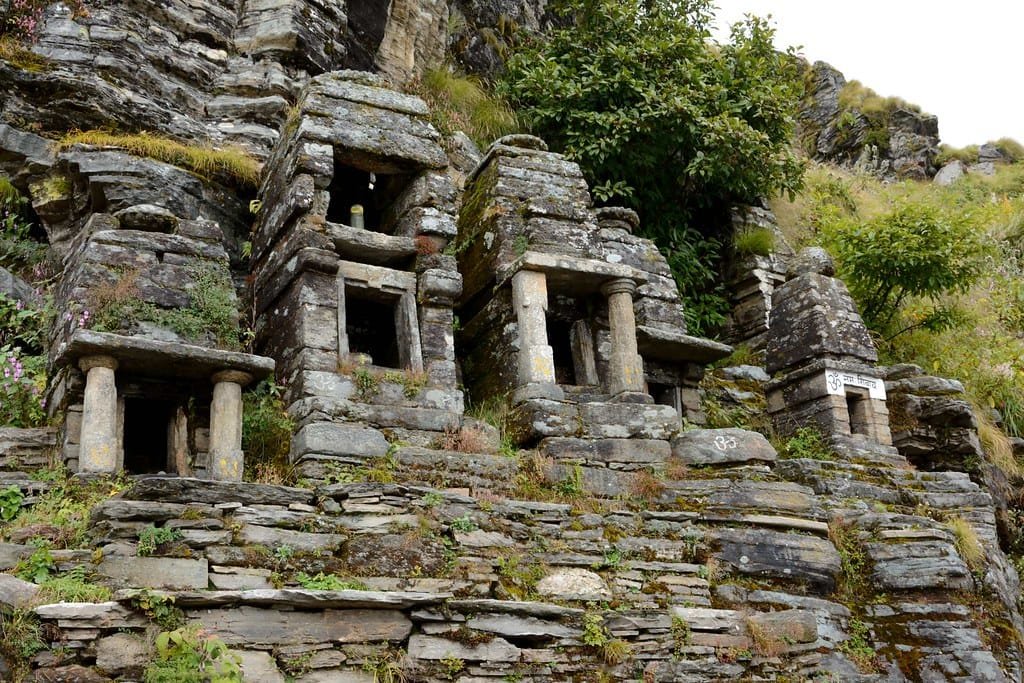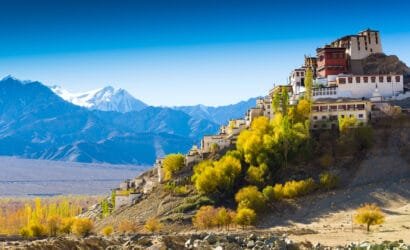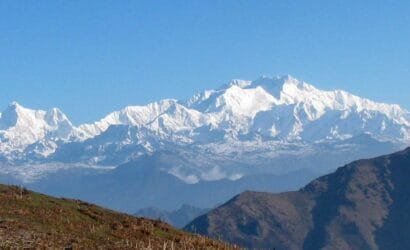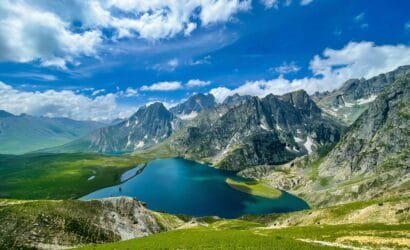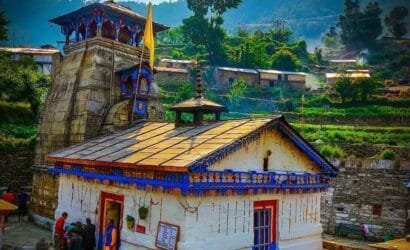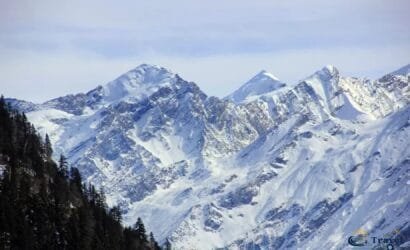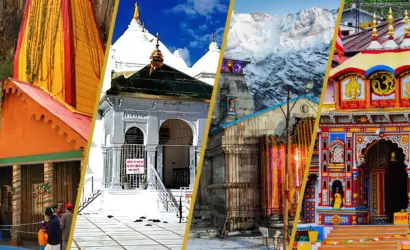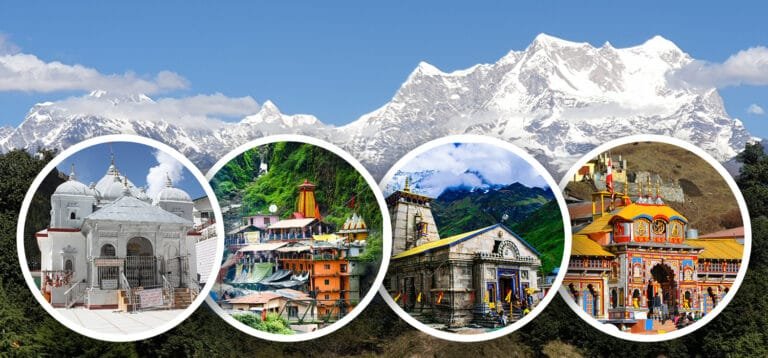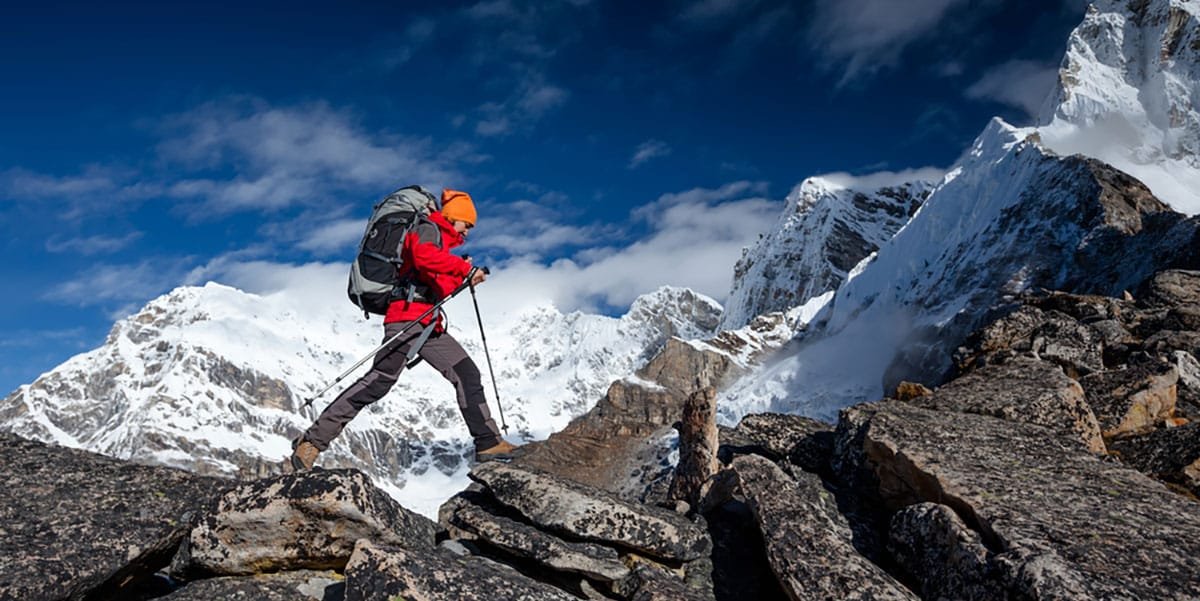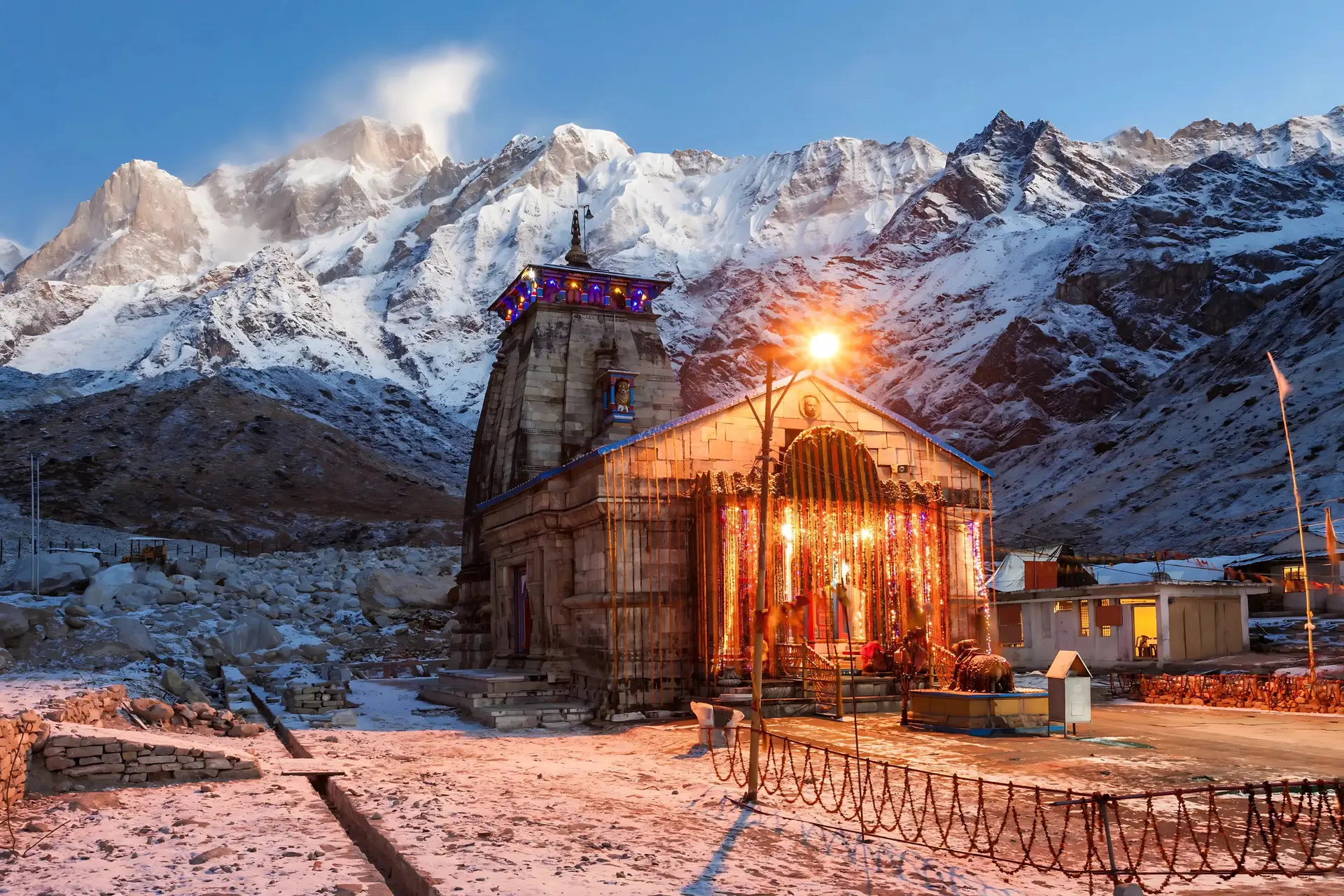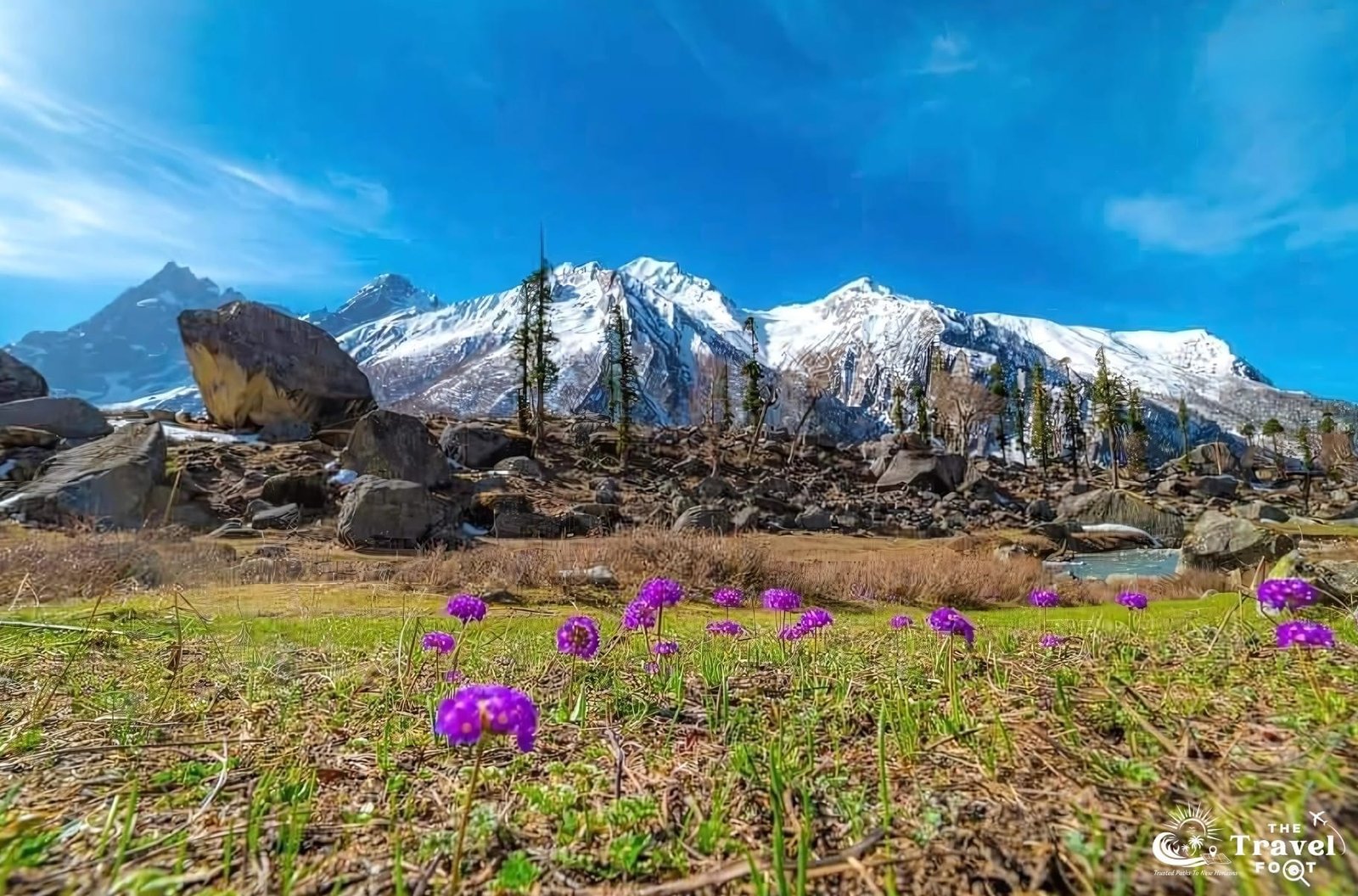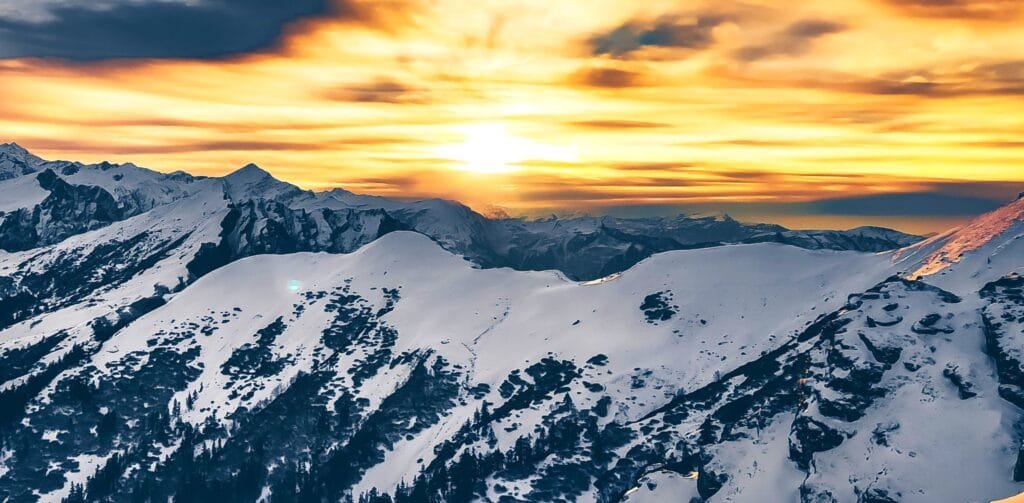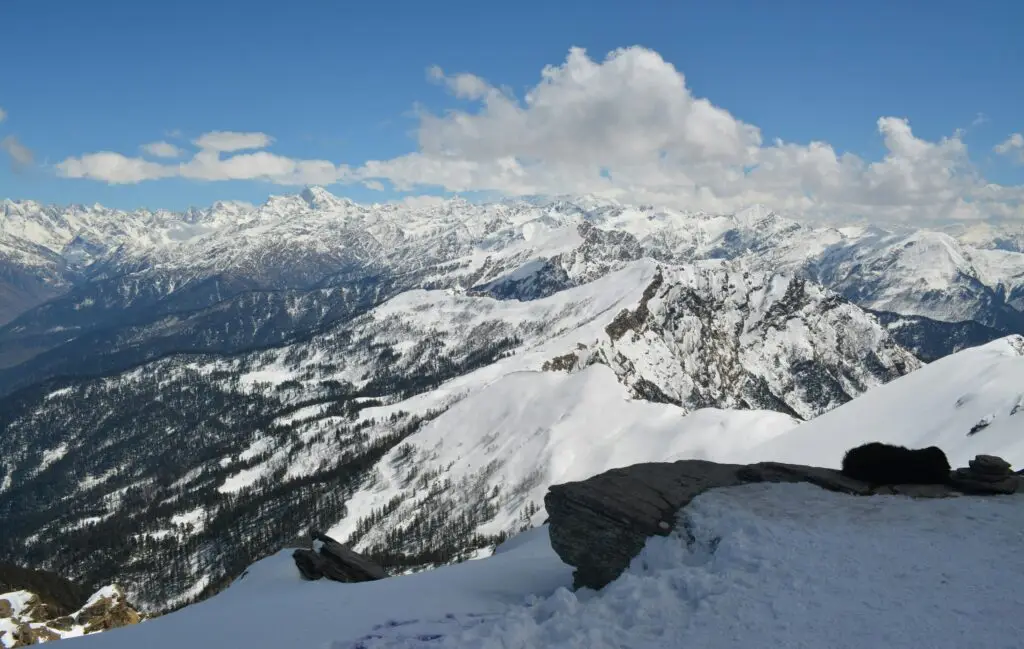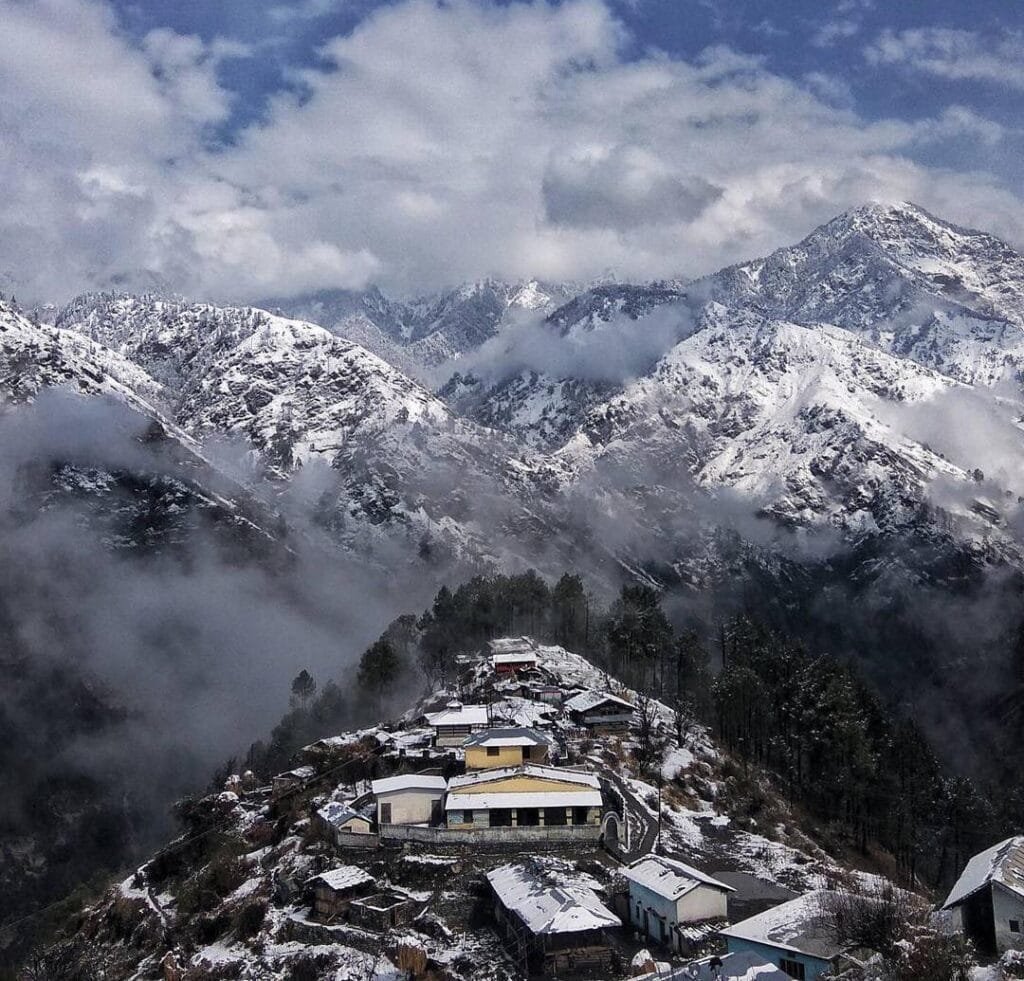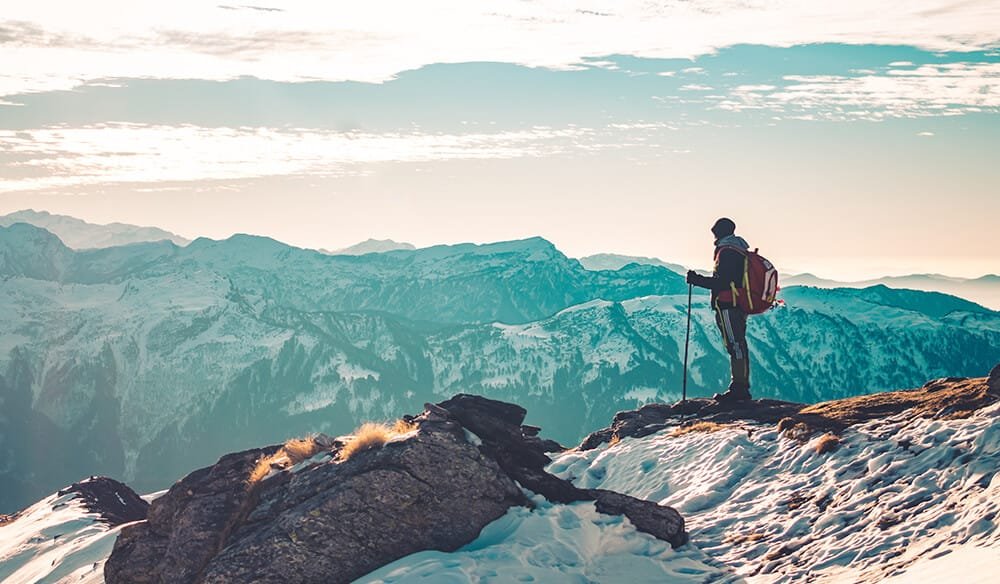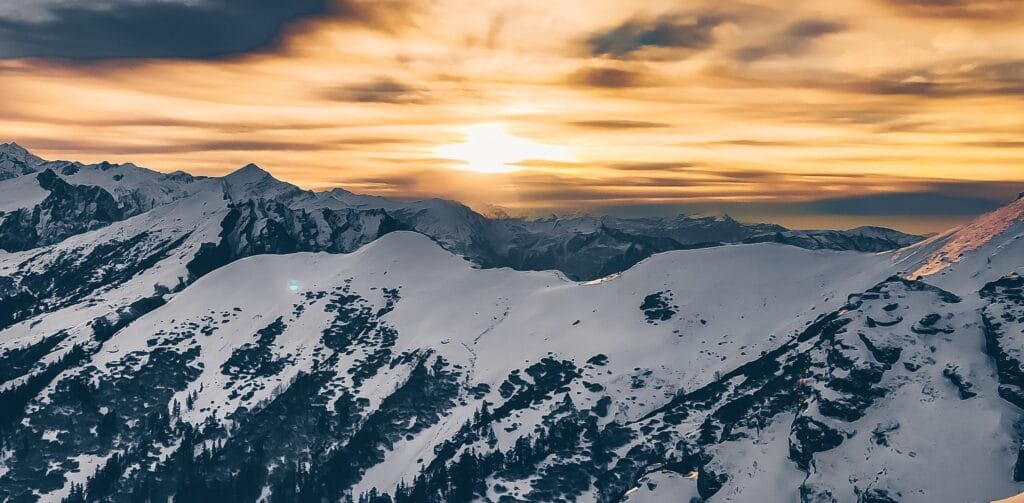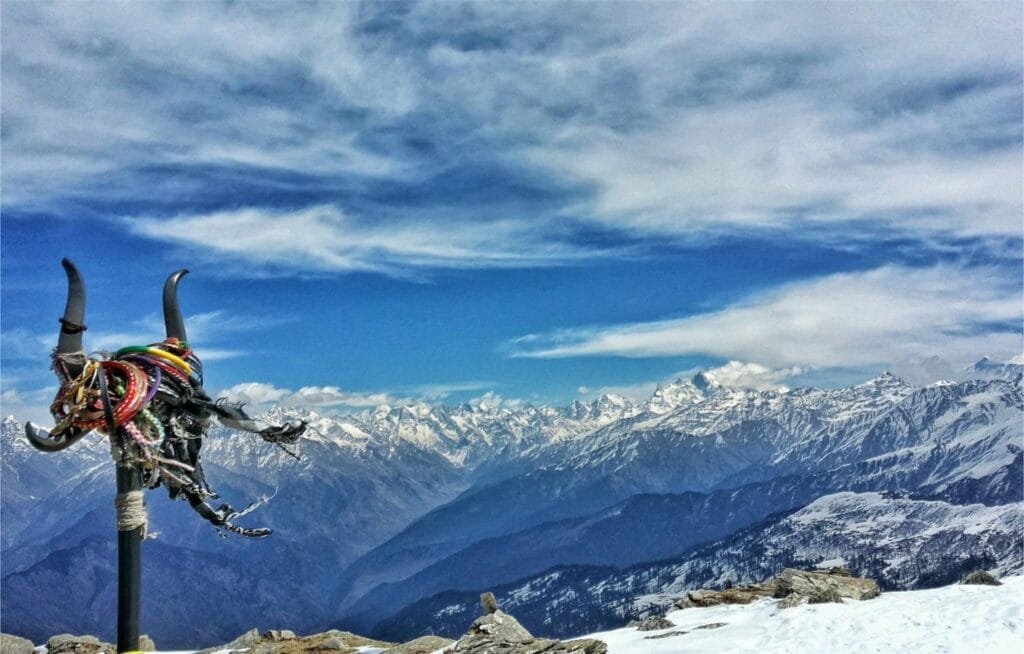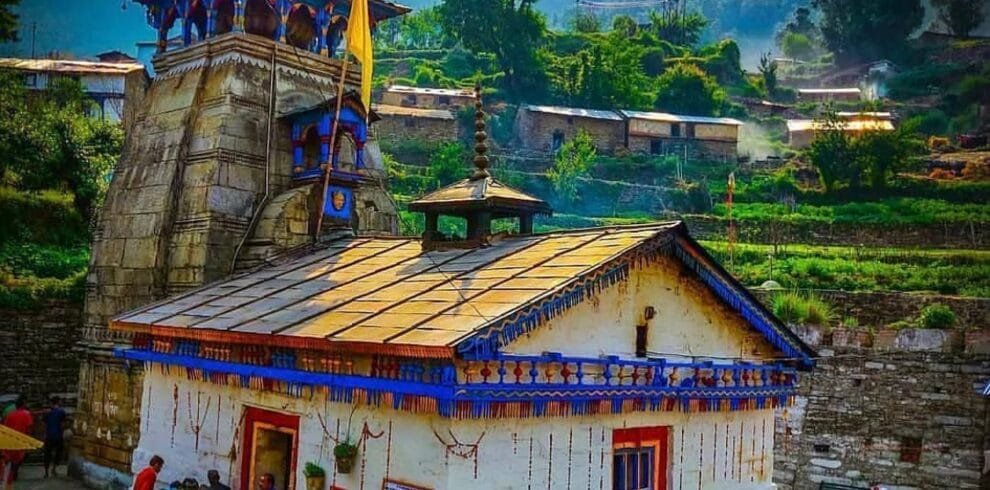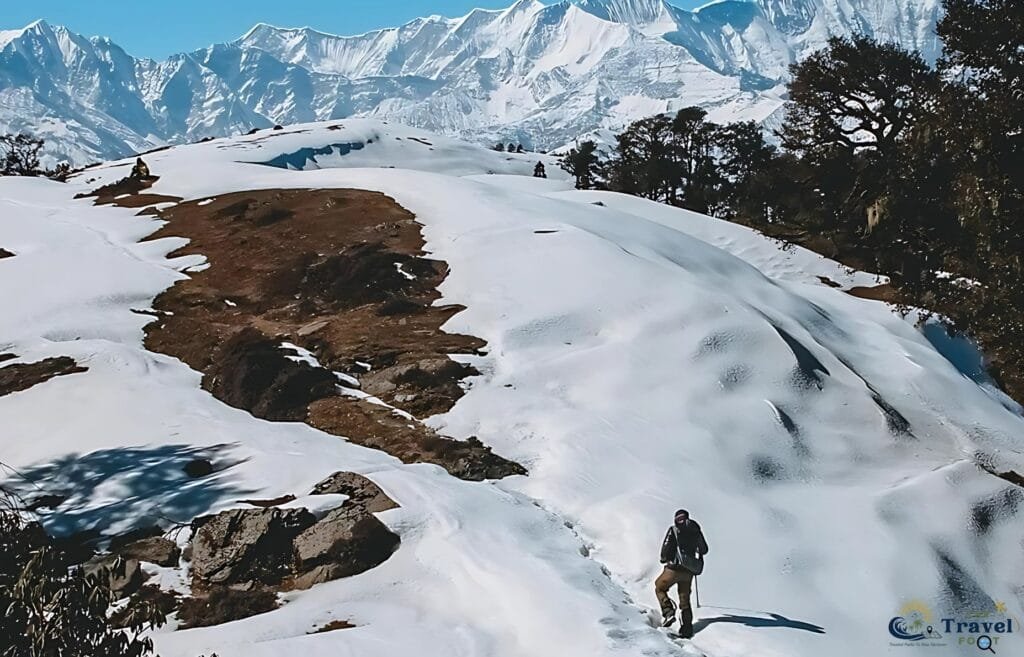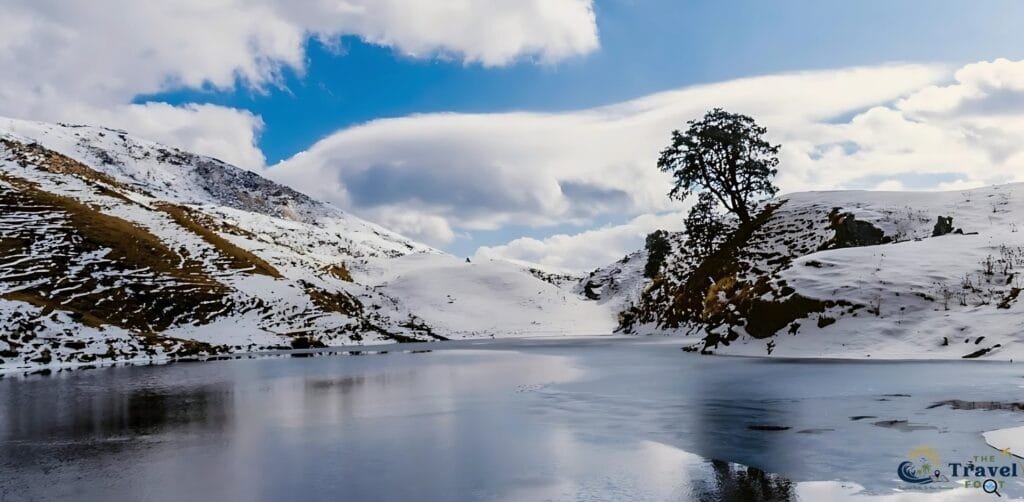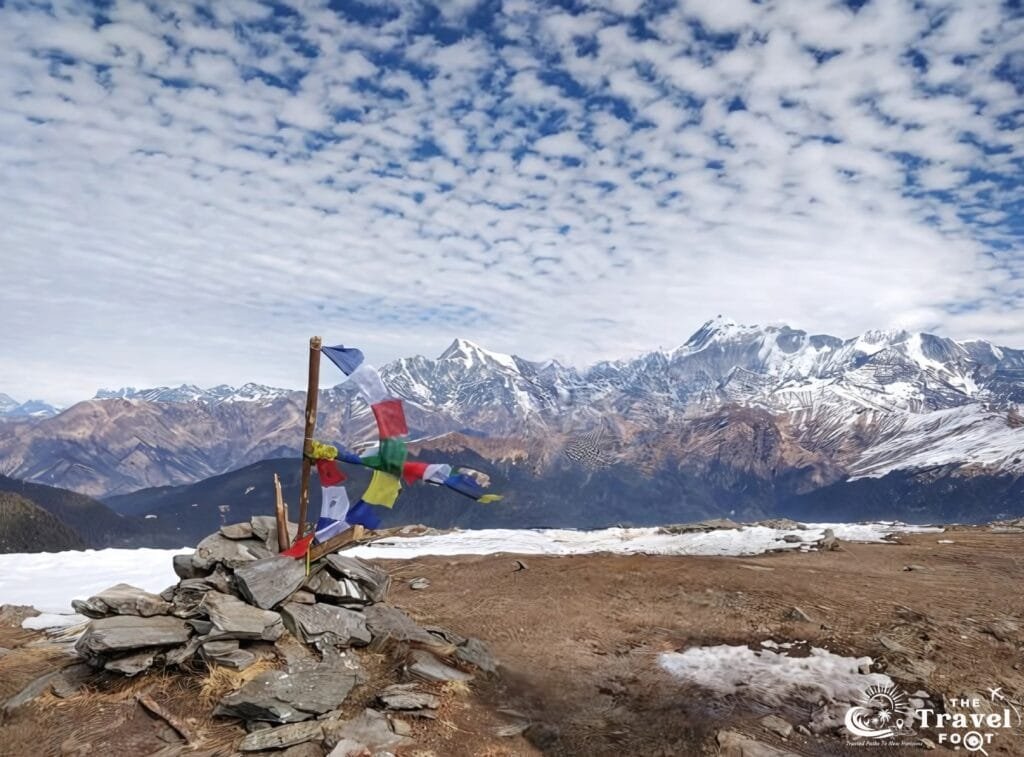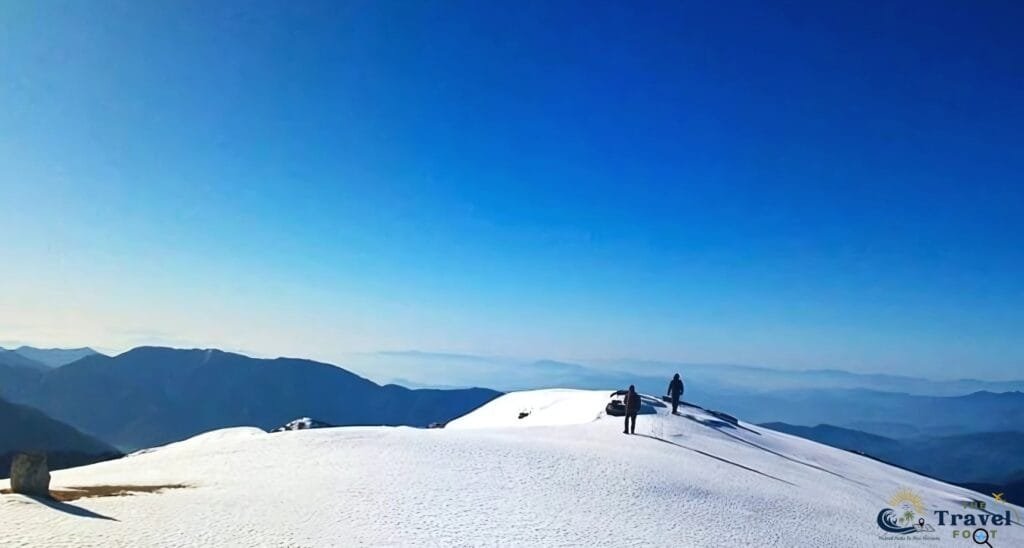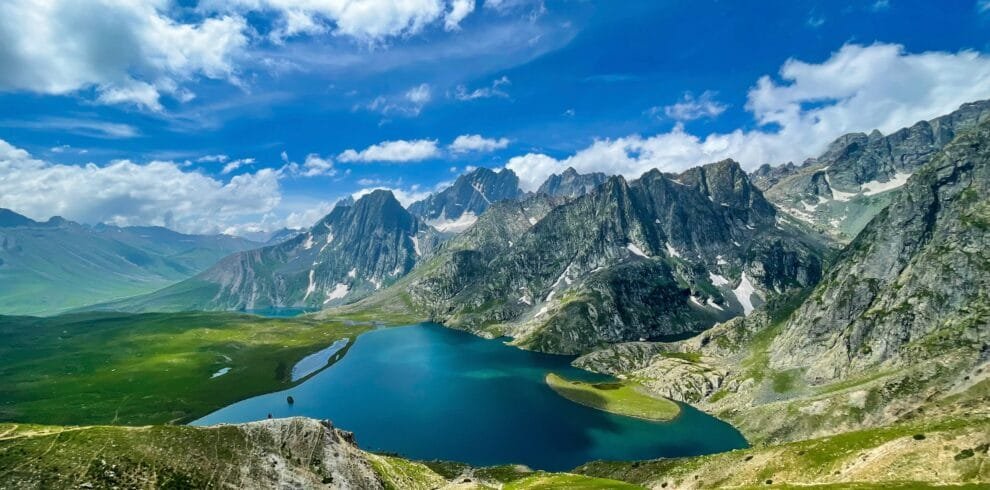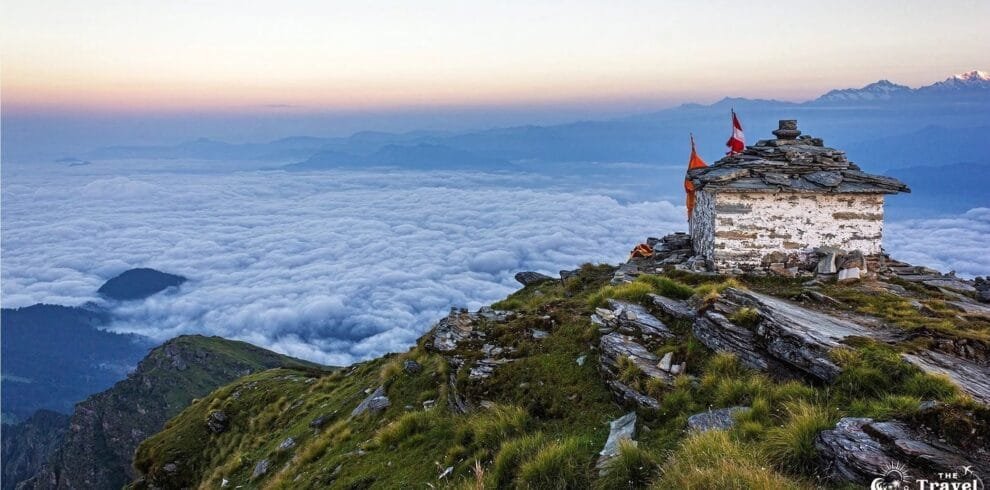It is a pilgrimage that transcends time. Panch Kedar Yatra is beyond a simple trek; it is a spiritual journey. It’s a holy journey witnessing the magnificent Garhwal Himalayas infused with mythology, religion, and the strength of the natural world. This journey connects more than distant mountain temples but the more profound spiritual realms of devotional inner and ancient Hindu belief. This trek weaves through forests at high altitudes, beautiful valleys, and arid pathways made of stone, ending in five sacred places in which Lord Shiva is thought to have appeared as a fragmented form of God.
The legend says that in the aftermath of the devastating conflict that erupted in Mahabharata, The Pandavas demanded the forgiveness of Lord Shiva for the bloodshed and destruction they’d caused. Shiva was unable to forgive the way he had done, disguised as a bull (Nandi), and vanished to the Garhwal mountains. After the Pandavas were after Shiva, the bull disintegrated into the earth and reappeared in five distinct locations–each representing an aspect of his celestial body. The five places are now referred to in the Panch Kedar.
At The Travel Foot, we invite you to join this ancient legend to follow in the footsteps of saints, sages, and other seekers. This is not just a physical journey but a transformational experience. Over the ages, the yatra has been a path of piety, devotion, and deep meditation, an act of worship rather than a choice.
The yatra will lead to five sacred temples that are each tucked away in an impressive Himalayan scene:-
1. Kedarnath – The Hump of Shiva
Located at 11755 feet, Kedarnath is not just a peak but a sacred site, the most revered among the five and one of the twelve Jyotirlingas, a manifestation of Lord Shiva. This temple, nestled amidst snow-capped peaks and glacial rivers, is where the divine hump of Lord Shiva was lifted. Despite its popularity, Kedarnath exudes a serene, ancient power that leaves all who visit humbled and spiritually enriched.
2. Madhyamaheshwar – The Navel of Shiva
Tucked away in a serene green valley near Ransi, Madhyamaheshwar is a destination of tranquility. The linga of black stone here symbolizes Lord Shiva’s navel. With a small number of pilgrims and abundant natural beauty, this temple is a haven of spiritual calm, embraced by the gentle whispers of the Himalayan wind.
3. Tungnath – The Arms of Shiva
It is the highest Shiva temple on the planet; Tungnath stands at 1207 feet. It is believed to be where God Shiva’s arms were first seen. The hike up to Tungnath at the base of Chopta is a short but steep climb and offers stunning views of majestic peaks such as Nanda Devi, Chaukhamba, and Trishul. Many climb further up until Chandrashila, the highest point just above the temple, which provides views of 360 degrees over the Himalayas.
4. Rudranath – The Face of Shiva
Rudranath is the most enigmatic of the Panch Kedar temples, shrouded within the Garhwal mountains. Here, the face of Lord Shiva is revered. The journey to Rudranath is long, challenging, and awe-inspiring, leading through ancient forests, alpine meadows, and holy Kunds. Rudranath is a place where the divine is inscribed on a natural rock temple, surrounded by peaks, and where prayers resonate in the thin mountain air.
5. Kalpeshwar – The Matted Hair (Jata) of Shiva
The last stop on the yatra Kalpeshwar is a tranquil cave temple within the Urgam Valley. This is the sole Panch Kedar shrine accessible all year round and where God Shiva’s locked locks matted (jata) are worshipped. A quick trek from the village takes you to the serene place where God’s presence is like closeness and intimacy.
WHY SHOULD YOU DO PANCH KEDAR ONCE IN A LIFETIME?
There are trips you go on for pleasure, but there are journeys that change you. The Panch Kedar Yatra is one of the spiritual Yatra that changes your internal soul. It’s more than just a walk over the Garhwal Himalayas; it’s an experience of the silence of surrender and the spiritual presence of Lord Shiva. Its unique blend of natural beauty, spiritual significance, and historical importance sets this journey apart.
✅ Walk the Path of Legends
The yatra you see today isn’t just a new design but a trail that Pandavas, sadhus, and sages walked for thousands of years. Each temple you visit represents more than just stone and history. It’s an integral part of the mythology that lives on through the mountain ranges, connecting you to a rich heritage of Hindu culture. The temple is not only an observer; you are an integral part of the tale.
✅ Connect to Shiva in His purest form
In contrast to temples in plains, Panch Kedar shrines are far away, untouched and utterly. There are few people and no sound; it is just pure nature and the sacred. In this place, you can feel Shiva within the temple and through the winds and snow in the quiet. It is not a prayer with the words of others but instead with your breath and presence.
✅ Experience Nature in Its Highest Form
The trail will take you through alpine meadows, sacred forests, the crystal river, and mountains that appear to be made by the gods. From the hypnotic sunrise of Chandrashila to the tranquility of Kalpeshwar, Every step humbles and lifts you. The retreat is encased in sacred intention.
✅ Transform the Inner Landscape
This isn’t simply a physical trip but an inner journey. The arduous paths, simple lifestyle, and the lack of extravagant lifestyles remove distractions and an ego. The only thing left is you, your breath, your will, and Shiva. Few experiences have a direct the same kind of mirror for your heart as this, inspiring and motivating you to transform your inner landscape.
✅ Disconnect to Reconnect
In a world of limited connectivity, minimal accommodations, and no technological interruptions, The Panch Kedar Yatra offers a rare opportunity to escape all the noise of life. It allows you to be in touch with what is essential: prayer, nature, self-awareness, and peace, giving you a sense of tranquility and serenity.
✅ The Legend of the Pandavas: Atonement for Karma
According to the Mahabharata, the Pandavas, who were victorious but burdened by guilt, begged Lord Shiva to forget their guilt after the war. Shiva, willing to forgive their sins easily, assumed the shape of a bull and entered the earth. His body reappeared in five locations, now enshrined as a shrine. The worship ritual at each of the five places is believed to be a replica of the Pandava’s pilgrimage of penance, making the yatra an ideal way to purify your spirituality.
✅ Each Temple Symbolizes a Cosmic Element of Shiva
Five Kedar temples are not just random worship sites, but they are various forms of Shiva’s sacred body and each symbolizing an underlying philosophical concept:
- Kedarnath (Hump) – Strength and endurance, the place of endurance.
- Madhyamaheshwar (Navel) – The origin of the universe, Divine nourishment.
- Tungnath (Arms) Action and power as the cosmic guardian.
- Rudranath (Face) Expression, karma, and a fierce sense of compassion.
- Kalpeshwar (Jata) The HTML0 Kalpeshwar is Timeless wisdom and is a source from the Ganga.
✅ A Path to Moksha (Liberation)
The concept of Hindu faith, pilgrimage (yatra), is more than the act of performing a ritual; it is also a way to dissolve egos and burn lives of karma. This Panch Kedar Yatra is especially revered because it’s an act of the Shiva parikrama (circumambulation) of his broken body, a symbol of surrendering to the demon who destroys the illusion of ignorance. Many believe that performing this yatra with a clean heart can bring moksha, which means freedom from the cycles of birth and death, making it a spiritually significant journey.
✅ Experience Shiva in His Most Raw, Unfiltered Form
Experience Shiva in His Most Raw, Unfiltered Form. These temples aren’t marble monuments but stone sanctuaries set among caves, glaciers, and forests. There isn’t any luxury in these, and you’ll find the Lord Shiva as he is in his most basic appearance is wild, unadorned, and pristine, at places such as Rudranath, where Shiva’s face Shiva is worshipped as the natural formation of rocks, unaltered by the passage of the passage of time. Here, myths are breathed into the air, and belief becomes a reality.
Mythological Aspect of Panch Kedar Yatra
The Panch Kedar Yatra is believed to have its origins in the epic tale of Mahabharata. In this ancient text, the Pandavas, seeking forgiveness for their transgressions following the Kurukshetra war, embarked on a journey to seek Lord Shiva in the Himalayas. Disguised as a bull, Shiva descended into the earth but reappeared five times, each time becoming a temple -Kedarnath (hump), Madhyamaheshwar (navel), Tungnath (arms), Rudranath (face), and Kalpeshwar (matted hair).
The shrines depict Shiva’s cosmic nature and the five elements that makeup nature, creating a spiritually transformational pilgrimage. The belief in the cleansing of karma and the promise of inner awakening through the practice of worshipping all five elements underscore the spiritual benefits of the Yatra.
The Yatra is not just a hike, but a legendary journey of dedication to penance, piety, and union with God. It involves following the exact paths of gods, saints, and seekers, symbolizing the commitment and devotion required for this spiritual quest.
Panch Kedar Trek Route
This Panch Kedar Yatra is among the most cherished religious pilgrimages of Uttarakhand. It traces the route of Lord Shiva over five temples that are sacred to the spiritual within the Garhwal Himalayas. From the sacred city of Rishikesh and Haridwar, the holy route takes you across some of the most beautiful remote regions in North India. The yatra starts in Kedarnath Temple (11,755 ft)–one of the Char Dham temples–where Shiva’s Hump is believed to have appeared. Then, the pilgrims travel towards Madhyamaheshwar (11,500 feet), symbolizing Shiva’s navel, surrounded by peaceful alpine meadows. It then takes them toward Tungnath temple (12,073 feet), the highest Shiva temple in the world, representing his arms. There’s also the option of climbing to Chandrashila Peak (13,500 ft) for breathtaking Himalayan landscapes.
The following part of the hike takes the hiker through thick forests and meadows that rise to high altitudes. Rudranath Temple (11,800 feet), where Shiva’s face is revered in the natural rock structure. It is the final stop at Kalpeshwar Temple (7,200 ft), a year-round accessible cave temple located in the tranquil Urgam Valley, which is believed to be the home of Shiva’s hair that is matted (jata). The trek lasts between 16-18 days and between 16 to 18 days; the Panch Kedar Yatra route provides the most challenging hiking adventure within Uttarakhand and profound spiritual growth. With The Foot, the Travel Foot, we manage this holy trail using knowledgeable guidance, genuine local guidance, and a dedication to deep spirituality, ensuring the Himalayan trek is a profoundly transformative adventure.
Best Time to Do Panch Kedar Yatra
The most suitable time to take this Panch Kedar Yatra is from mid-May until the beginning of October when the weather is favorable and the five temples are open. May through June provides cool temperatures, clear skies, and blooming Himalayan flowers, making it the ideal time for treks through Kedarnath, Tungnath,and Madhyamaheshwar. The monsoon seasons (July through the middle of September) bring heavy rainfall and can render trekking trails dangerous, even as the scenery grows lush and vivid. The period from mid-September through the beginning of October is generally regarded as the best time for trekking. It has beautiful views, crisp air, and fewer crowds, making it ideal for doing all of the circuit with peace. During the winter months (October until April), most temples are closed due to the snowfall, except Kalpeshwar which remains open round the year. To enjoy a balanced journey of beauty, spirituality, and security, Travel Foot recommends planning your Panch Kedar Yatra for the months before or after the monsoon season.

